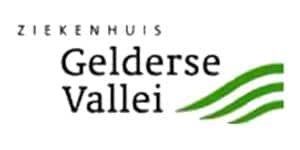Improving patient care and reducing costs with visual analytics
Gelderse Vallei Hospital brings data analysis directly to medical staff
What if you could use weather forecasts to determine demand for doctors’ visits? At Gelderse Vallei Hospital in the Netherlands, a visual analytics approach is reducing wait times, improving care and even predicting when the weather will cause a spike in doctors’ visits.
We provide the medical staff with data they can view on the web or via mobile phones, and they can respond immediately … It’s highly addictive to be able to delve deeper and establish new correlations.
Rik Eding
Data Specialist and Information Analyst
“We provide the medical staff with data they can view on the web or via mobile phones, and they can respond immediately,” explains Rik Eding, Data Specialist and Information Analyst for the hospital. “You click on the data you want to analyze and the form in which you want it presented.” According to Eding, “It’s highly addictive to be able to delve deeper and establish new correlations.”
The ability for anyone, not just IT, to view data helps find outliers having a negative impact. Hospitals in the Netherlands are judged by wait times, and Gelderse Vallei’s wait time for hernia surgery had jumped. “When we looked closer, it was because two patients postponed their operations due to holidays,” Eding explains. “If we left these two cases out of consideration, our waiting period had actually decreased.”
Users conduct analysis without relying on IT
Before using SAS® Visual Analytics, the hospital staff was dependent on Eding and his colleagues to provide reports and analysis. “As soon as we compiled the report, we immediately received 10 follow-up questions,” he says.
When SAS Visual Analytics was rolled out, colleagues reacted enthusiastically. “I saw care managers and physicians start exchanging ideas mutually,” Eding says. “They started asking questions about what they could do themselves. That is exactly what we had hoped for. We are capable of providing reports, but the hospital units know best what information they require.”
The hospital has also been able to break out of siloed reporting and incorporate outside data sources, such as weather data or information from the country’s Social and Cultural Planning Office about the income and education level of patients. “Our physicians had noticed that people with lower levels of education and income had a higher mortality risk,” Eding says. “One of the physicians wanted to link the patients’ clinical features to their social status to better identify the mortality risk. In this way, we as the hospital can respond even better to a patient’s individual situation.”
Eding elaborated that the ease of use encourages creativity thinking. “I included weather information in our data warehouse at the request of pulmonologists. Now they can predict which patients are going to develop symptoms by using the weather forecasts. They are then able to arrange treatment accordingly. That, of course, is awesome.”
And for the first time the finance department, which had used data to reduce costs, can work in unison with the medical staff. “We can improve the quality of care and reduce costs,” Eding says. “That’s what makes SAS Visual Analytics so exceptional.”

Challenge
Allow health workers to study data so they can improve quality of care, reduce wait times and understand what drives long hospital stays.
Solution
Benefits
- Doctors and hospital staff can analyze data without help from IT.
- Information is shared and interacted with via mobile devices.
- Staff can make adjustments to improve care, reduce wait times and understand underlying reasons for poor outcomes.